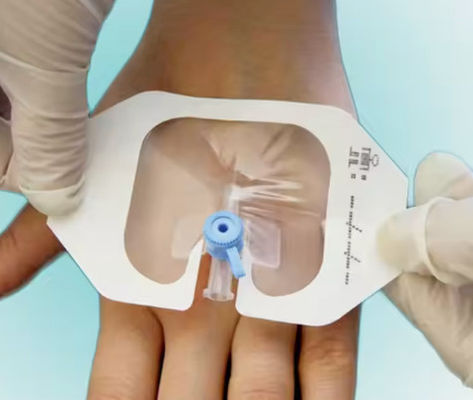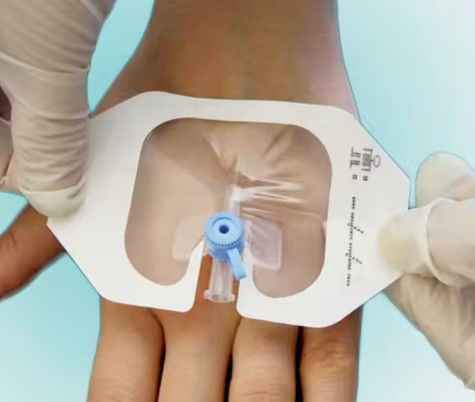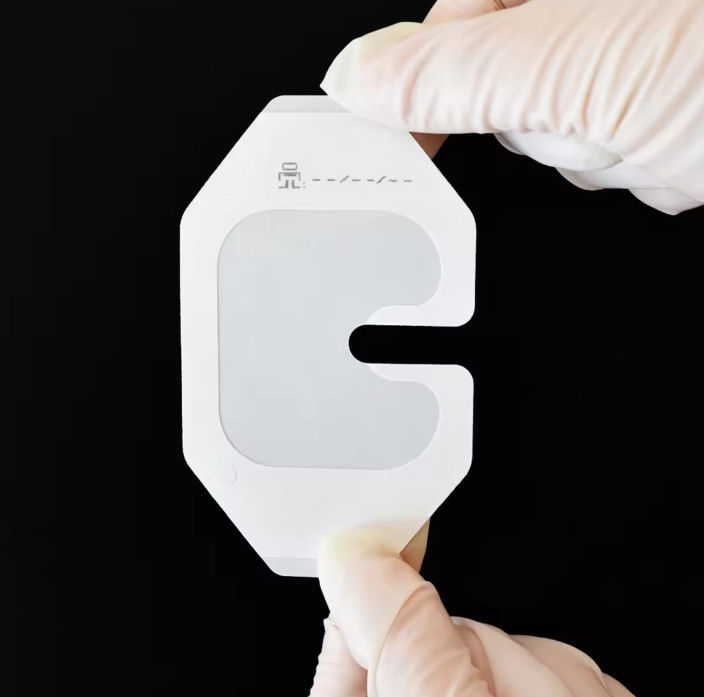
Sterile Adhesive IV Cannula Fixing Dressing Transparent Wound Medical Dressing
-
Highlight
Transparent Wound medical Dressing
,IV Cannula Fixing Dressing
,Sterile Adhesive IV Cannula Fixing Dressing
-
NameTransparent Wound Dressings
-
Disinfecting TypeEO Sterile
-
Size6cm*7cm
-
StockNo
-
Shelf Life3 Years
-
MaterialPU Film
-
Quality CertificationCE/ISO
-
Instrument ClassificationClass II
-
PropertiesMedical Materials & Accessories
-
ApplicationIV Dressing
-
FeatureWaterproof/Healthy
-
UsageHospital/clinic Medical
-
SampleAvailable
-
Packing1pc/bag
-
OEMAccept OEM
-
KeywordI.V. Dressing
-
Place of OriginChina
-
Brand NameHenan
-
CertificationCE
-
Model NumberCan be Customized
-
Minimum Order Quantity5000pcs
-
PriceNegotiable
-
Packaging DetailsIndividual Packaging
-
Delivery Time24-30 days
-
Payment TermsL/C, T/T, Western Union
-
Supply Ability50000000pcs per month
Sterile Adhesive IV Cannula Fixing Dressing Transparent Wound Medical Dressing
Sterile Adhesive IV Cannula Fixing Dressing Transparent Wound medical Dressing
1.Product description
Transparent IV wound dressings are thin, adhesive dressings that are commonly used to cover and protect intravenous (IV) sites. These dressings are typically made of a transparent film that allows healthcare providers to monitor the IV site without having to remove the dressing.
2.Key features
- Visibility: The transparent nature of these dressings allows for easy visualization of the IV site, enabling healthcare professionals to monitor the insertion site for signs of infection, swelling, or leakage without removing the dressing.
- Protection: Transparent IV dressings provide a barrier against external contaminants, reducing the risk of infection at the IV insertion site.
- Breathability: Many transparent IV dressings are designed to be breathable, which helps maintain a moist wound environment conducive to healing.
- Waterproof: Some transparent IV dressings are waterproof, allowing patients to shower without compromising the integrity of the dressing.
- Secure Adhesion: These dressings are typically designed with gentle, yet secure adhesive that keeps the dressing in place without causing damage to the skin upon removal.
- Flexibility: Transparent IV dressings are often flexible and conformable, making them suitable for use on joints or areas that require a greater range of motion.
- Easy Application: The adhesive nature of these dressings makes them easy to apply quickly and efficiently, reducing the time required for dressing changes.
![]()
3.Application
- IV Site Management: Transparent IV dressings are frequently used to cover and secure IV catheters and insertion sites. They provide a barrier against infection and help healthcare providers monitor the IV site for signs of complications.
- Central Line Dressing: Transparent dressings are often used to secure central venous catheters (CVCs) and other central lines. They allow for easy visualization of the catheter insertion site and reduce the risk of catheter-related infections.
- Wound Care: Transparent dressings can also be used to cover and protect minor wounds, abrasions, and surgical incisions. They create a moist wound environment that promotes healing and prevents contamination.
- Pressure Ulcer Prevention: In some cases, transparent dressings are applied to high-risk areas to prevent pressure ulcers. These dressings help distribute pressure evenly and protect the skin from friction and shear forces.
- Protective Barrier: Transparent IV dressings can act as a protective barrier for fragile or sensitive skin, reducing the risk of damage from adhesive tapes and dressings.
- Surgical Incisions: After surgical procedures, transparent dressings are often applied over incision sites to provide a protective covering while allowing healthcare providers to monitor the wound without removing the dressing.
- Monitoring: These dressings are valuable for continuous monitoring of wounds, IV sites, and other skin conditions without the need for frequent dressing changes, reducing the risk of skin trauma.
4.Why are transparent dressings commonly used for IV sites?
This type of dressing is the favored option for PIV catheter sites in the most current guidelines. Transparent film dressings with additional securement features can provide better stability and reduce complications.
5.What is a transparent wound dressing used for?
Transparent film dressings are self-adhesive and can adhere to the wound site without actually sticking to the wound margins. By providing an outer covering, the film dressings allow for a moist environment and epithelial cell migration over the wound surface. This leads to improved wound healing.
6.How often should IV transparent dressing be changed?
Replace dressings used on short-term CVC sites every 2 days for gauze dressings. 7. Replace dressings used on short-term CVC sites at least every 7 days for transparent dressings, except in those pediatric patients in which the risk for dislodging the catheter may outweigh the benefit of changing the dressing.



